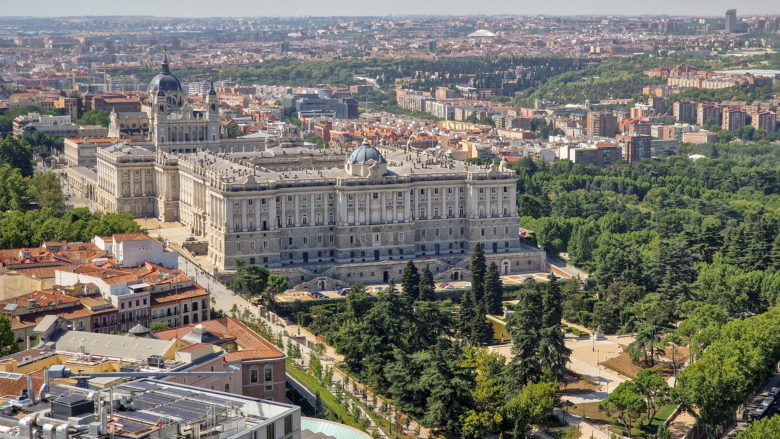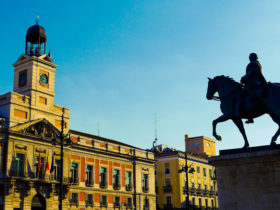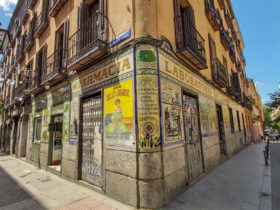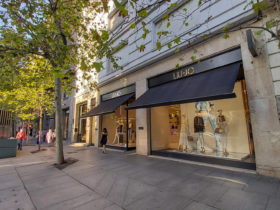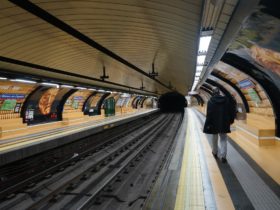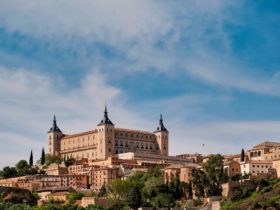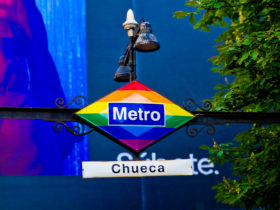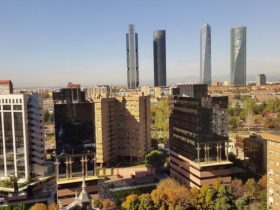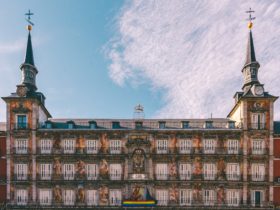Madrid, Spain’s capital, is rich in history and cultural charm, captivating travelers worldwide. Its numerous famous landmarks and diverse experiences make it a top destination for European city breaks. Keep reading to discover the top 20 attractions in Madrid, Spain.
Table of Contents
- The Top Attractions in Madrid
- 1. The Royal Palace of Madrid
- 2. El Prado Museum
- 3. Retiro Park
- 4. Plaza Mayor
- 5. Puerta del Sol
- 6. Gran Vía & Plaza España
- 7. Santiago Bernabéu Stadium
- 8. Mercado de San Miguel
- 9. Temple of Debod
- 10. El Rastro Market
- 11. Almudena Cathedral
- 12. Museo Nacional Centro de Arte Reina Sofía
- 13. Cibeles Palace and Fountain
- 14. Puerta de Alcalá
- 15. Thyssen Bornemisza Museum
- 16. CaixaForum Madrid
- 17. Casa de Campo Park
- 18. Sorolla Museum
- 19. Madrid Río Park
- 20. Parque de El Capricho
The Top Attractions in Madrid
Located in the heart of Spain, Madrid is buzzing with life and filled with artistic treasures. Many museums, art galleries, and theaters exhibit remarkable works from Spanish and international artists. Among the renowned sites are the Prado Museum, Reina Sofia National Art Centre, and Thyssen-Bornemisza Museum, each displaying unique art collections.
Madrid’s impressive history is evident in its stunning architecture. For example, the 18th-century Royal Palace of Madrid provides insight into the city’s past. The city also features beautiful parks and green spaces like El Retiro Park.
Food enthusiasts will appreciate Madrid’s culinary scene as it showcases flavors from various Spanish regions and tapas galore. Traditional markets throughout the city allow travelers to enjoy these dishes in their freshest state.
Keep Reading About Madrid…
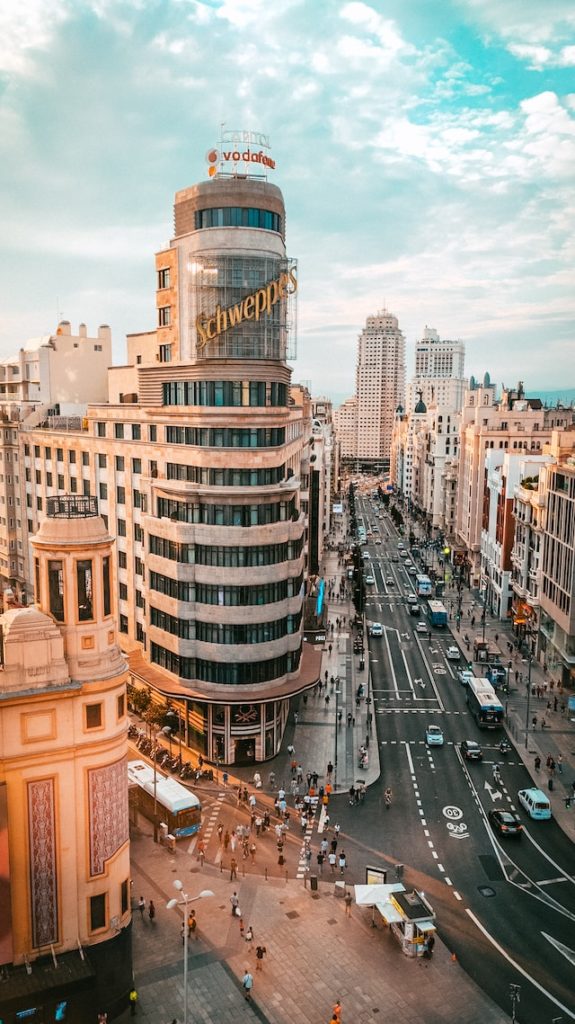
1. The Royal Palace of Madrid
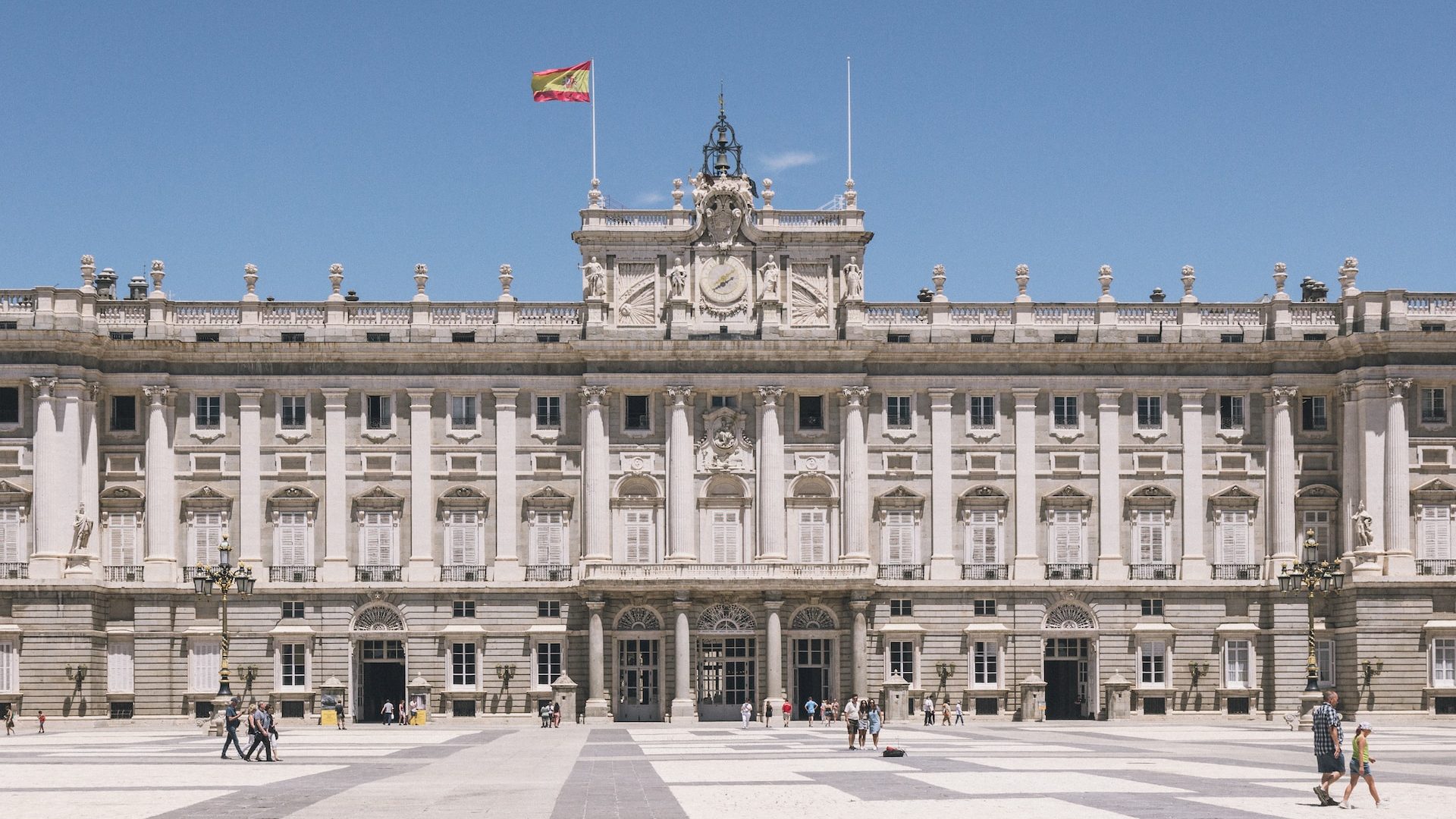
The Royal Palace, also known as Palacio Real, is a must-see landmark in Madrid. It is located in the city center’s western part. Not far from the palace, tourists find several metro stations, including Ópera and Sol, which provide easy public transportation access.
The palace is a historical attraction with roots dating back to the 9th century when a Moorish fortress, or alcázar, once occupied the site. Many architectural changes and renovations have occurred, leading to various visual elements on display today.
The current palace was constructed primarily during the 18th and 19th centuries after the original alcázar was destroyed by fire. Its design showcases Baroque and Neoclassical influences from Italian many architects, including Filippo Juvarra, Juan Bautista Sacchetti, and Narciso Pascual y Colomer. The Royal Palace is impressive not only in size and grandeur but also in its vast collection of artwork, sculptures, and ornamental details.
Palacio Real is open from 10:00 AM to 6:00 PM. However, hours may vary during special occasions or events. Admission tickets can be purchased online or on-site, and guided tours are available.
2. El Prado Museum
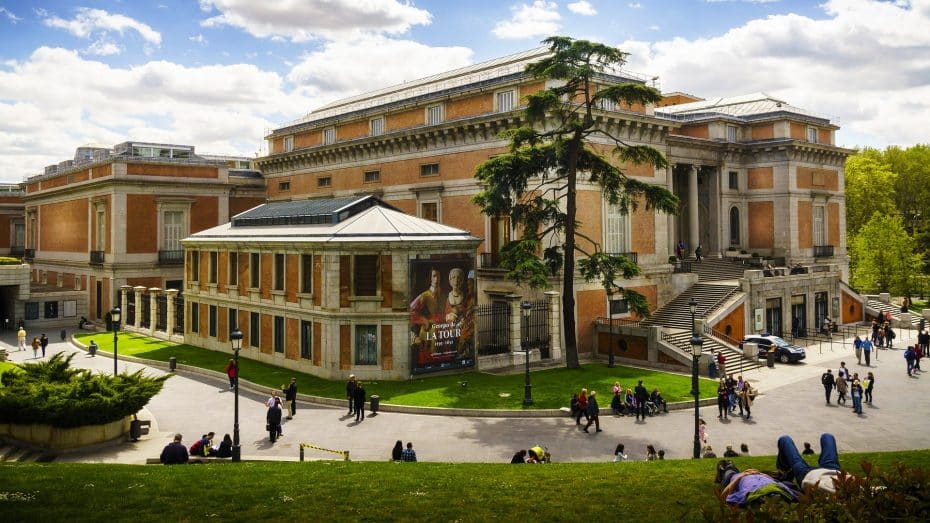
The Museo del Prado, located in Madrid, Spain, is a renowned art museum and a must-see destination for tourists interested in history and culture. Situated in the heart of the city, near the famous Retiro Park and Paseo del Prado, the museum is easily accessible by public transportation. The closest metro station is Estación del Arte (Line 1) to the southeast of the museum. Atocha station is also close by.
First established in 1819, Museo del Prado displays an extensive range of European art from the 12th to the early 20th century. It is particularly famous for its collections of Spanish art, including great masterpieces by artists such as Velázquez, Goya, and El Greco. The museum’s building has a neoclassical design and was initially planned by architect Juan de Villanueva.
Museo del Prado operates on a weekly schedule with varying opening hours. From Monday to Saturday, it opens its doors from 10:00 am until 8:00 pm and on Sundays and holidays from 10:00 am to 7:00 pm. Entry fees for the general public are 15 euros, while reduced prices for certain groups, such as students or seniors, are available. Free entry opportunities also exist during specific times (check the official website).
Book skip-the-line tickets for El Prado Museum.
3. Retiro Park
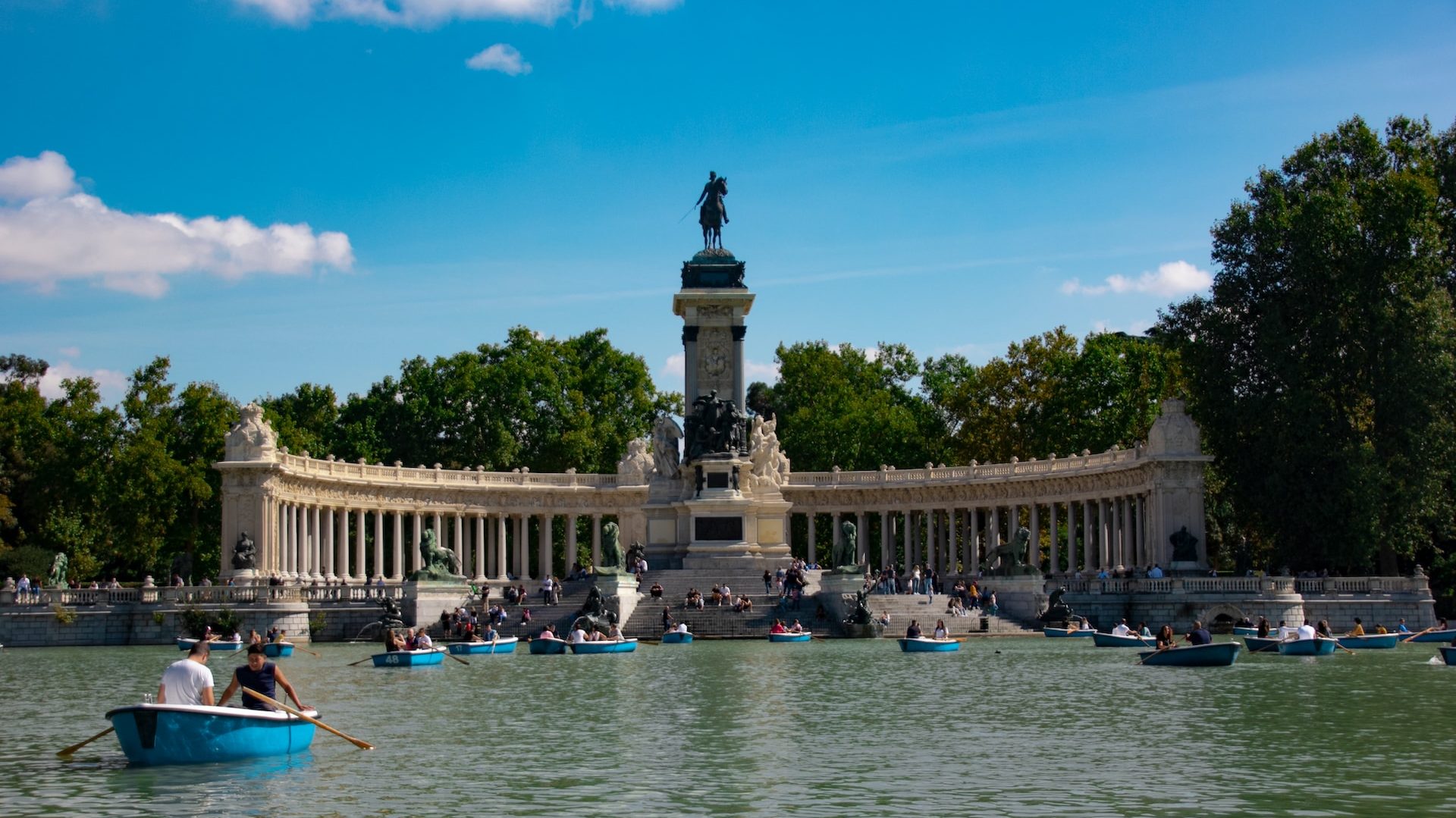
Retiro Park, officially called Parque del Buen Retiro, is a significant point of interest in the city of Madrid, Spain. Located in the city center’s eastern part, the park occupies 350 acres of land. The nearest metro station to reach this picturesque garden is Retiro station (Line 2), but you can easily reach it from other stations such as Estación del Arte (Line 1) and Banco de España (Line 2).
The fascinating park has a rich history dating back to the early 17th century when King Philip IV established it as a royal garden. Open to the public in the late 19th century, Retiro Park boasts remarkable architecture and sculptures. It features various landmarks such as the Palacio de Cristal, a glass pavilion built in 1887; the Monument to King Alfonso XII; and a scenic boating lake, among others.
Tourists can visit Retiro Park every day of the week without paying an entrance fee. The opening times differ according to the season: from April to September, it is open between 06:00-24:00, while from October to March, visitors may access it between 06:00-22:00.
4. Plaza Mayor
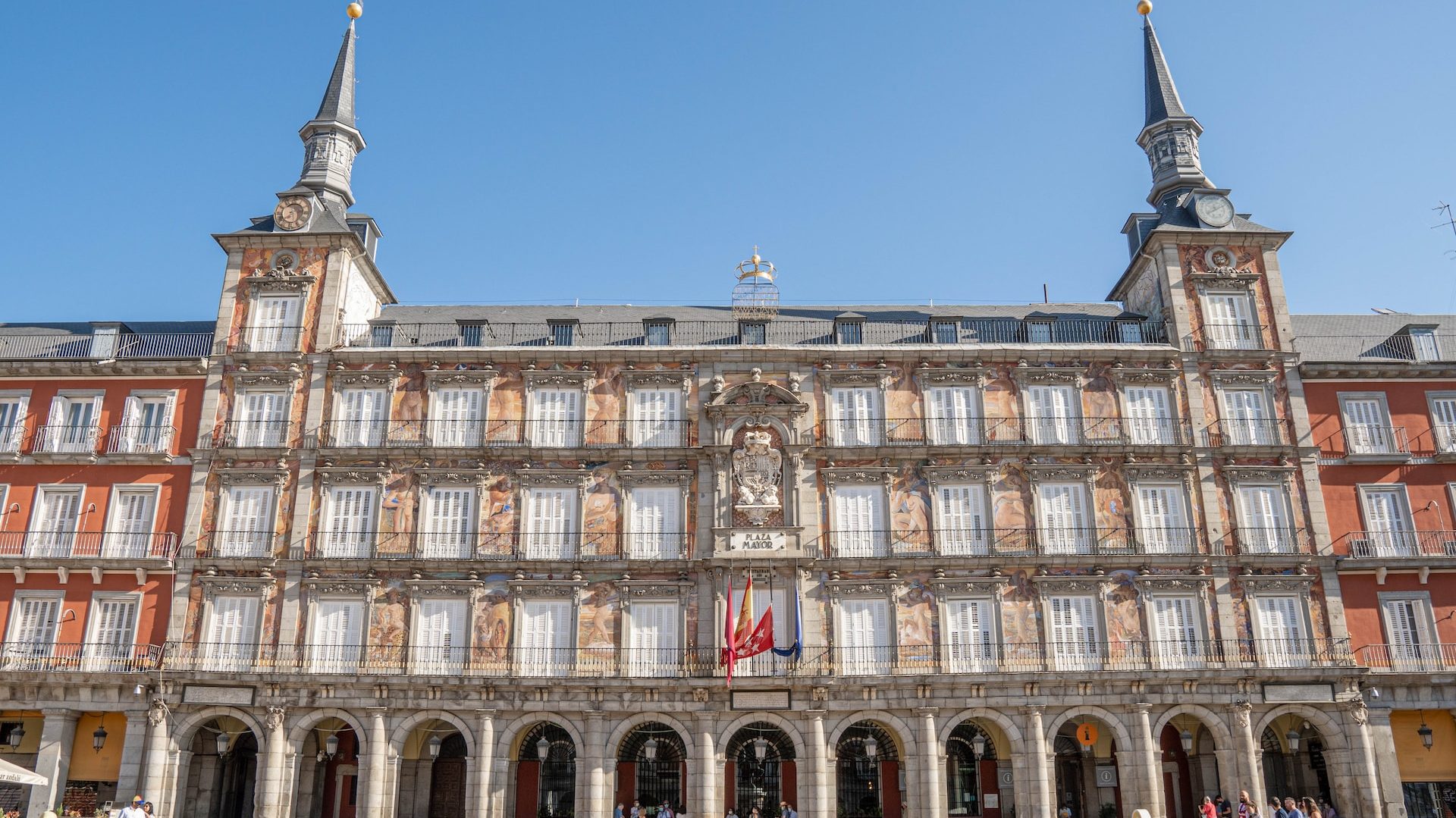
Located in the heart of Madrid, Plaza Mayor offers an authentic experience of Spanish history, culture, and architecture. The square is positioned centrally within the city and easily accessible via the Sol and Opera metro stations.
Constructed during the Habsburg period, this famous plaza houses unique architectural features such as Casa de la Panadería, the impressive central building adorned with frescoes on its facade. Additionally, an equine bronze statue of King Philip III, delivered by sculptor Juan de Bolonia and his pupil Pietro Tacca in 1616, stands proudly in the middle of the square.
Initially built in the 15th century, Plaza Mayor has witnessed many historical events throughout its existence. It underwent several renovations until reaching its appearance in the 18th century under King Charles III. The square once hosted bullfights, public executions, and various celebrations.
Today, Plaza Mayor is a vibrant meeting place for locals and travelers. Traditional cafes encircle the square, shops sell souvenirs, art galleries showcase Spanish masterpieces, and street performers entertain passersby. It is an ideal location for those interested in exploring Madrid’s history while soaking up Spain’s contemporary atmosphere.
5. Puerta del Sol
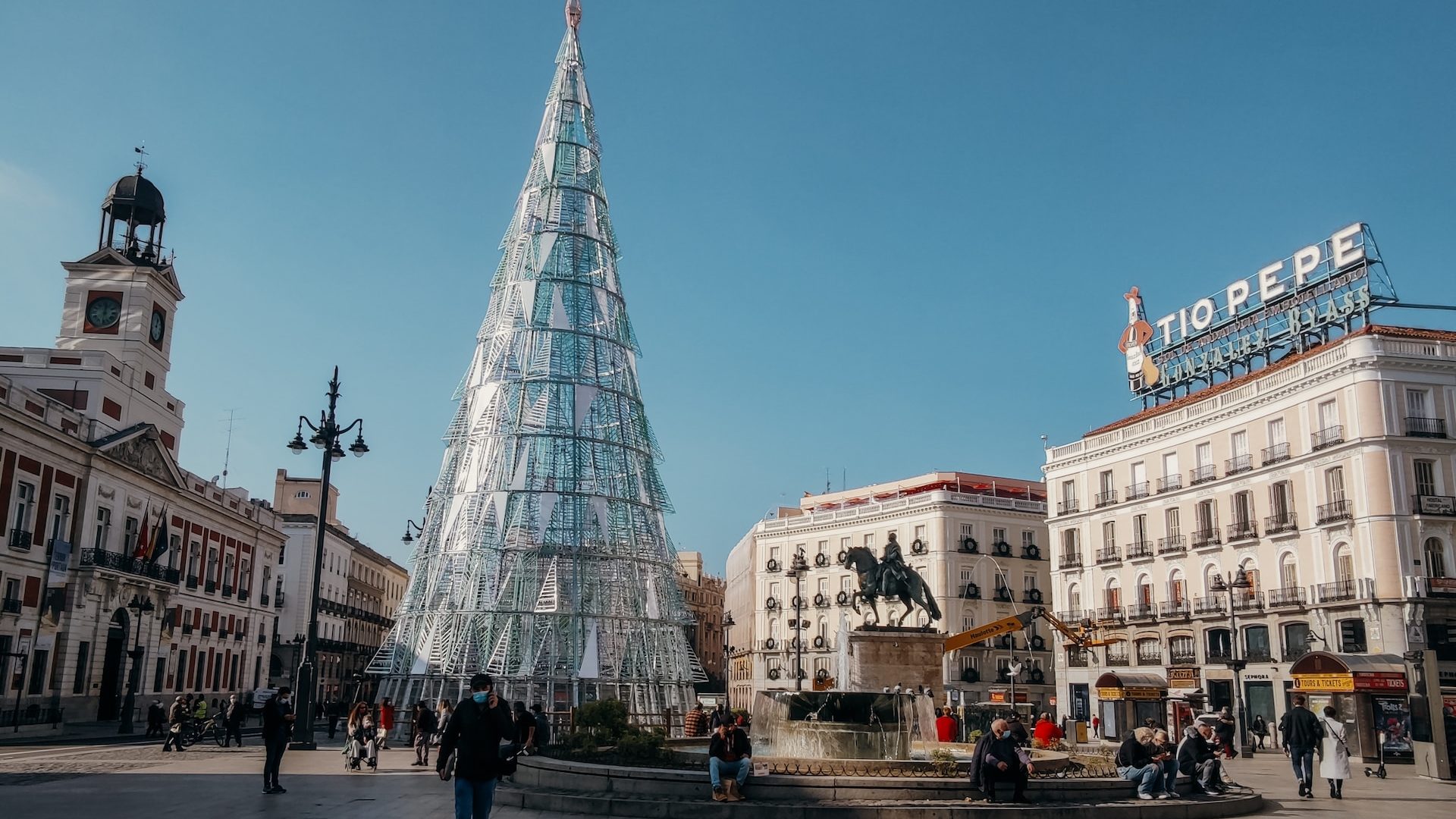
Located in Madrid’s city center, Puerta del Sol is a must-visit attraction in the Spanish capital for tourists interested in history and architecture. This notable spot offers effortless access through the nearby Sol metro station and Cercanías railway station.
Historically, the square is significant as it was one of Madrid’s gates during the 15th century. The name “Puerta del Sol” translates to “Sun Gate” due to its former status as an entry point adorned with a rising sun. Over time, the square has evolved and now features numerous outstanding buildings displaying unique architectural styles.
A famous structure at Puerta del Sol is the Casa de Correos, built in the 18th century and presently housing Madrid’s regional government headquarters. The clock tower on Casa de Correos holds importance for its role in ringing in the New Year with twelve chimes.
Furthermore, Puerta del Sol is home to several remarkable monuments, including King Charles III’s equestrian statue and the emblematic Bear and Strawberry Tree statue. The latter symbolizes unity between church and state and serves as Madrid’s heraldic symbol.
6. Gran Vía & Plaza España
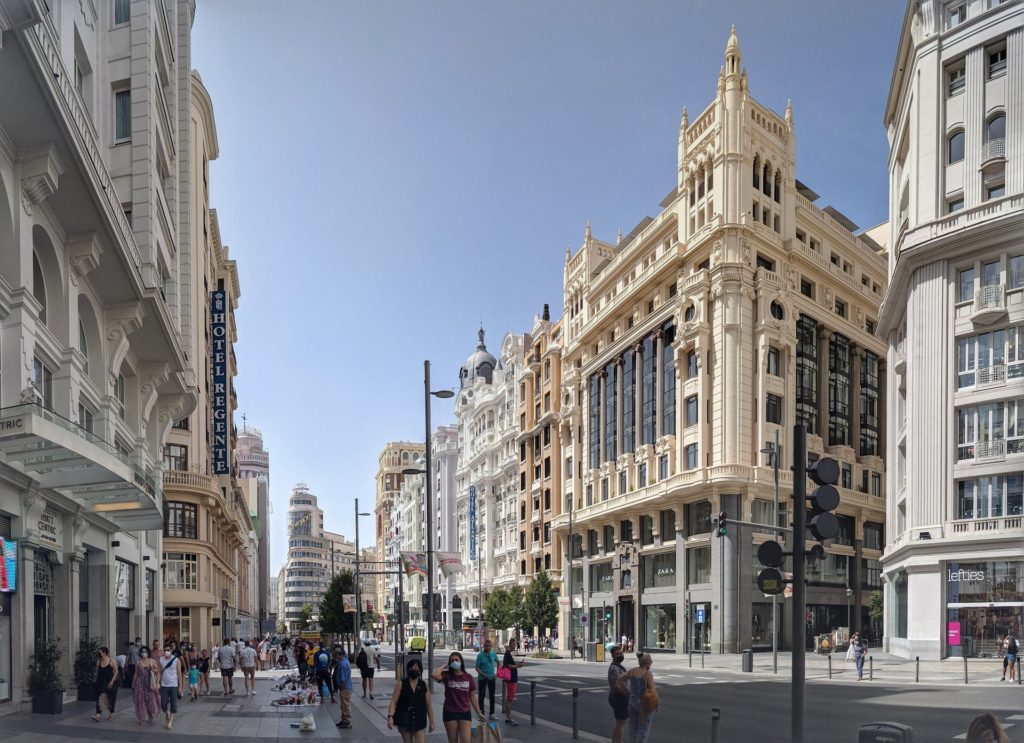
Gran Vía and Plaza España are significant landmarks in Madrid, the capital city of Spain. Located in the central part of the city, they are easily accessible via public transportation. The closest metro stops are Gran Vía station, served by Lines 1 and 5, and Plaza España station, which connects to Lines 3 and 10.
Construction of Gran Vía began in 1910 and was completed in multiple phases until 1929. It was designed as a broad avenue to serve as the city’s primary thoroughfare. Today, this iconic street features impressive architecture representing various styles, such as Art Deco, Modernista, and Neo-Mudéjar. Gran Vía is also a hub for shopping, dining, and entertainment, with numerous theaters, cinemas, cafes, and shops lining the street.
At the western end of Gran Vía lies Plaza España, a large square designed by architect Joaquín Sigüenza y Saiz as part of the final phase of Gran Vía’s construction. This square is marked by two emblematic high-rises: Torre de Madrid (now the Barceló Torre Madrid) and Edificio España (now RIU Plaza España). Built in the 1950s, these buildings were recently turned into hotels and have become symbols of modern Madrid. Plaza España’s center is home to a monument dedicated to Spanish writer Miguel de Cervantes. This bronze and stone tribute depicts famous characters Don Quixote and Sancho Panza from Cervantes’s renowned novel Don Quixote.
7. Santiago Bernabéu Stadium
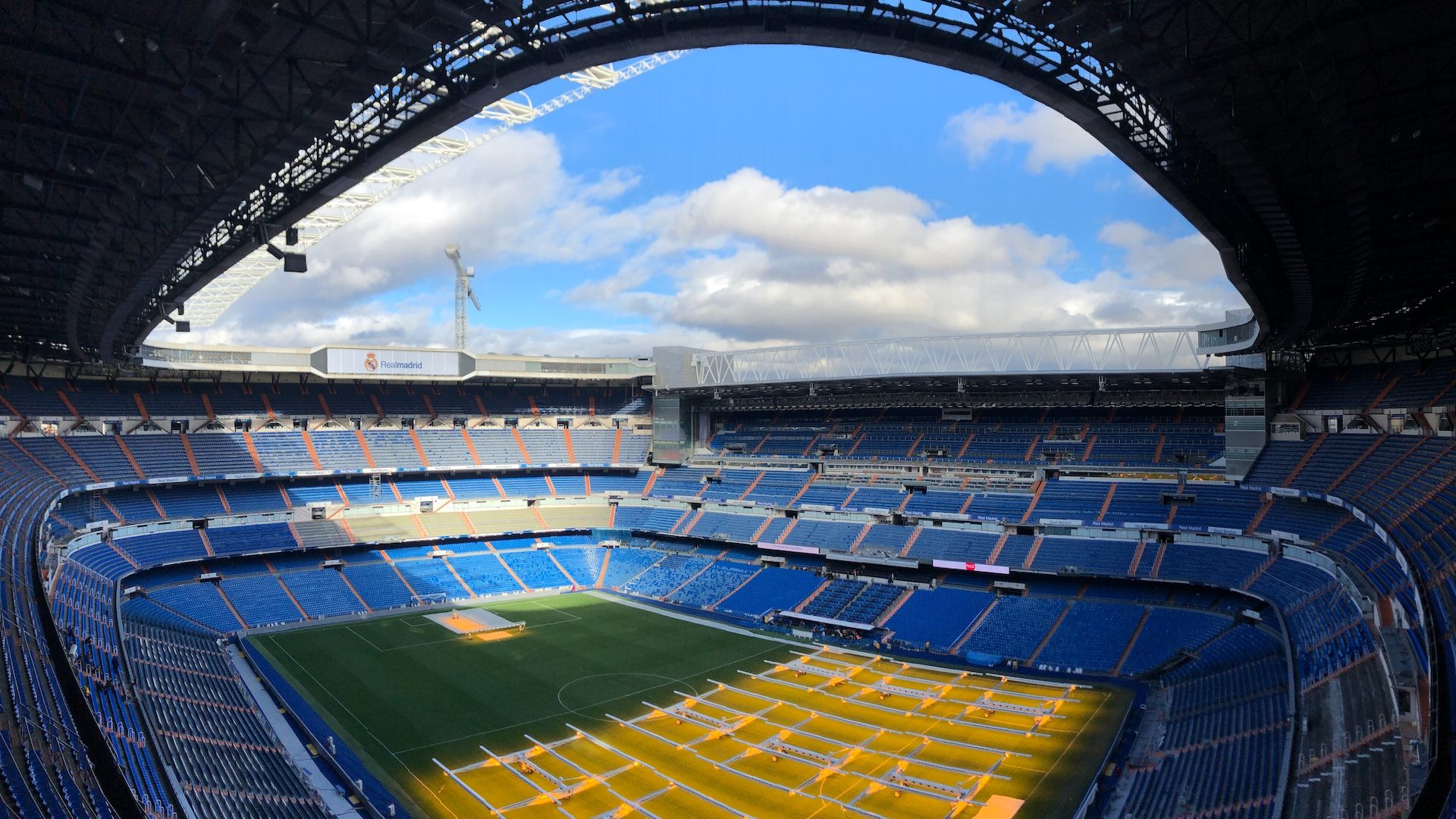
Santiago Bernabéu Stadium, located near the heart of Madrid, is a remarkable sight to explore. Widely appreciated for its history and architectural design, this iconic stadium sits in the city’s northern area.
Easily accessed by the metro, one can reach the stadium via Line 10 and Line 14, disembarking at Santiago Bernabéu station. Alternatively, Charmartín railway station is just a short distance away for those traveling by train.
The massive structure has undergone numerous renovations, opened in 1947, and was named after Real Madrid’s revered former president Santiago Bernabéu Yeste. Its current seating capacity accommodates over 81,000 spectators.
Fans of sports and architecture will marvel at the colossal arena exhibiting smooth lines and a sense of grandeur. The stadium’s impressive features include a retractable roof and state-of-the-art facilities.
Santiago Bernabéu Stadium opens its doors for guided tours every day except for the dates of major events. Ticket prices vary depending on age and guided or self-guided tour options. Regular hours are from 9:30 am to 7:00 pm on weekdays and from 10:00 am to 6:30 pm on weekends and holidays.
Book the Santiago Bernabéu Stadium tour.
8. Mercado de San Miguel

The Mercado de San Miguel is a historic market in the historical center. This famous attraction, located in the city’s central area, close to Plaza Mayor, is easily accessible via the Sol and Ópera metro stations.
Initially constructed in 1916, the Mercado de San Miguel boasts a unique iron and glass architectural design typical of the early 20th-century period. Renovated in 2009, the market is now a hub for gastronomic exploration and cultural immersion.
Visiting the Mercado de San Miguel offers an excellent opportunity to observe local life and enjoy various Spanish specialties, including tapas, seafood, freshly baked bread, and desserts. Furthermore, gourmet shops sell unique food items such as olives, spices, and cheeses, while wine bars allow for sampling regional wines grown throughout Spain.
The market operates daily from 10:00 am to midnight. Entrance to this iconic Madrid destination is free; however, prices for food and drink vary according to individual stall offerings.
Book a Madrid tapas and wine tour.
9. Temple of Debod

The Temple of Debod is an ancient Egyptian temple located in Madrid, Spain’s Parque del Oeste. Originally constructed in Egypt around 200 BC, it was dismantled and relocated to Madrid as a gift from the Egyptian government in 1968. The temple was gifted to Spain in recognition of their assistance in saving the Abu Simbel temples during the construction of the Aswan High Dam.
Situated on a hill overlooking the city, this remarkable monument offers incredible views of Madrid. The temple is dedicated to the gods Amon and Isis, with various reliefs and inscriptions decorating its walls. These features provide valuable insight into Egypt’s rich history and culture.
Visiting the Temple of Debod allows people to learn more about Egypt’s past while exploring Madrid’s scenic Parque del Oeste. The park also contains several walking trails, gardens, and recreational areas for visitors to enjoy.
Reaching the Temple of Debod is convenient due to its location near popular public transportation options, such as Metro (Plaza de España and Ventura Rodríguez stations).
10. El Rastro Market
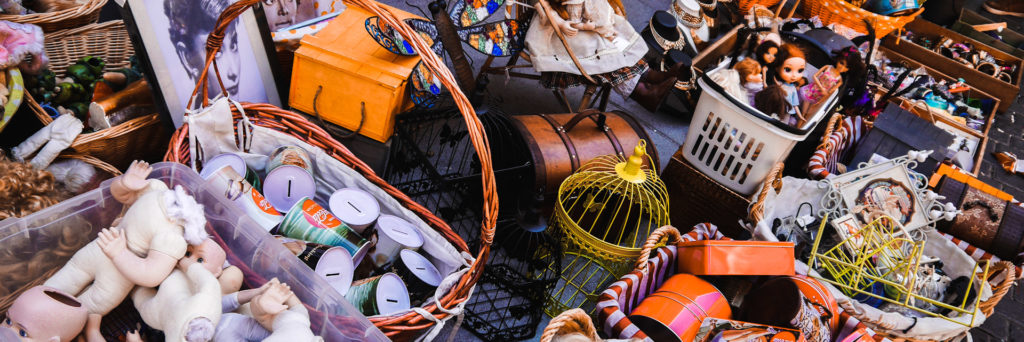
El Rastro Market is a popular open-air flea market that began in the late 18th century and has since become a significant attraction for locals and tourists. It is situated in the vibrant La Latina neighborhood, with narrow streets and historic buildings.
El Rastro Market occupies a large space along the Ribera de Curtidores, once a tanneries hub. Here, one can find various small stalls selling various items, including antiques, clothes, ceramics, decorative pieces, handicrafts, souvenirs, and many other second-hand and handmade products.
Among the attractions in El Rastro Market are shops that sell collectibles and unique items, such as San Cayetano Street for stamps and coins or Mira el Sol Street for vintage posters. Calle de la Fragua and Calle San Millán are well-known for their antique shops.
To reach El Rastro Market by public transportation, travelers should take Metro Line 1 to Tirso de Molina station or Line 5 to La Latina station. Alternatively, various bus lines like routes 17, 18, 23, and 35 stop near the market area.
The market operates every Sunday from 9:00 a.m. to 3:00 p.m., making it a perfect weekend activity for those looking to experience the local culture or discover hidden treasures. However, due to its popularity, the market tends to become crowded during peak hours.
11. Almudena Cathedral
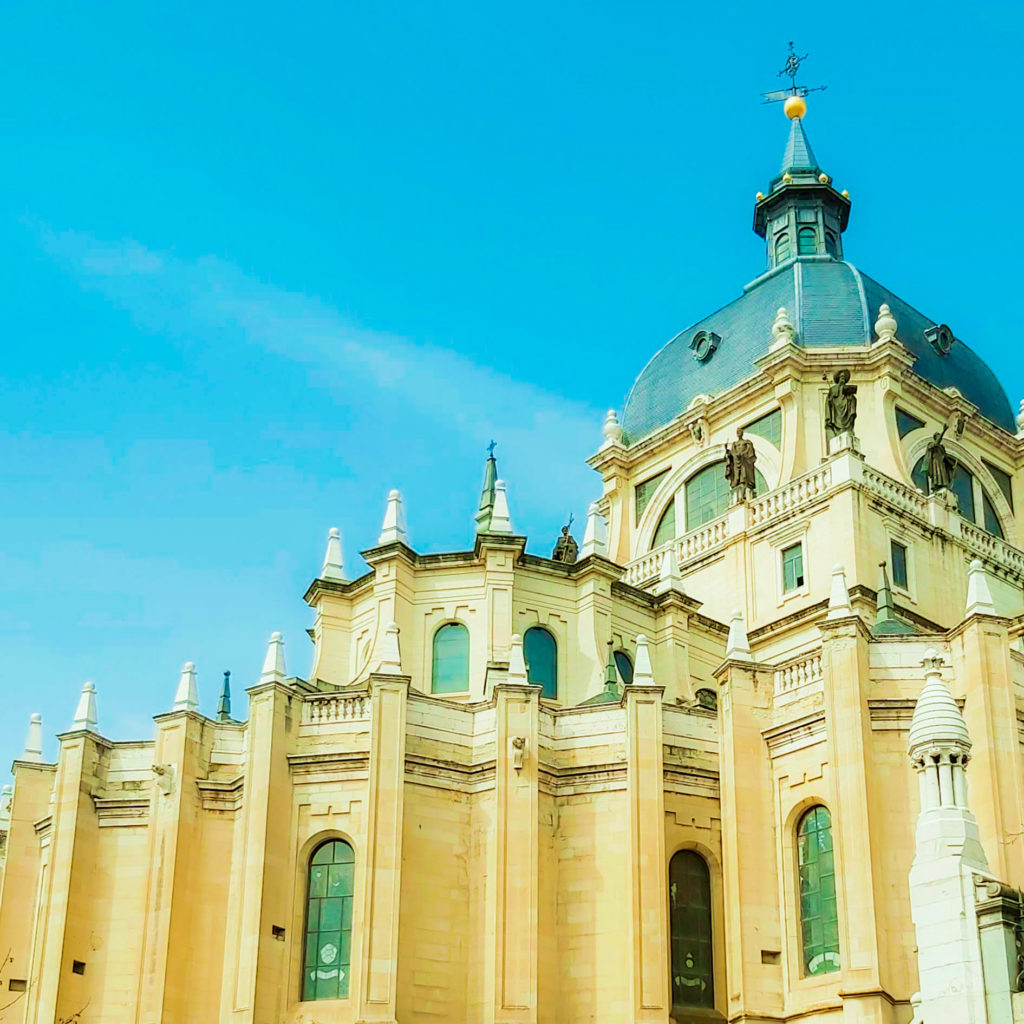
Almudena Cathedral, or Catedral de Santa María la Real de la Almudena in Spanish, is a Roman Catholic church located in Madrid, Spain. This historical site was consecrated by Pope John Paul II in 1993. It is recognized as the seat of the Roman Catholic Archdiocese of Madrid.
The construction of this cathedral began in 1883, and the process spanned over a century, being completed in 1993. Francisco de Cubas and Fernando Chueca Goitia were two of the leading architects responsible for its distinctive design. The cathedral showcases a mix of neo-Gothic, neo-Romanesque, and neo-Baroque architectural styles that integrate wonderfully with the surrounding cityscape.
Almudena Cathedral sits adjacent to the Royal Palace of Madrid, one of Spain’s most famous landmarks. While inside the cathedral, several notable sights catch the eye. These include the beautiful Chapel of Princes, stunning stained glass windows, and ornate ceiling art.
To reach Almudena Cathedral, travelers may use various means of transportation available within Madrid. Metro stations Opera and Sol are close to the cathedral, facilitating access for those using public transportation. Additionally, several bus lines stop near the cathedral.
The Almudena Cathedral usually opens from 9:00 a.m. to 8:30 p.m., Monday through Sunday.
Madrid: Royal Palace & Cathedral Skip-the-Line Guided Tour.
12. Museo Nacional Centro de Arte Reina Sofía

The Reina Sofía Museum, officially known as Museo Nacional Centro de Arte Reina Sofía, is a well-known art museum in Madrid, Spain. Established in 1990, this museum showcases 20th and 21st-century artworks. Named after Queen Sofía of Spain, the museum is housed in the former location of the city’s General Hospital, a historic building dating back to the 18th century.
Centrally located in Madrid, the museum can be found close to Atocha Railway Station, making it highly accessible for those traveling in and around the city. The institution features remarkable modern and contemporary art collections by celebrated European artists. Among its most noteworthy works is Pablo Picasso’s “Guernica,” which depicts the horrors of war and is considered one of his most powerful artworks.
Aside from Picasso, visitors to the museum will also experience pieces by renowned artists such as Salvador Dalí, Joan Miró, and Juan Gris.
Reaching the Reina Sofía Museum is relatively easy, thanks to its proximity to public transport options. While Atocha Railway Station is one main connection point for many coming from outside Madrid, various buses and Metro Line 1 also have stops near the museum.
The opening hours for the Reina Sofía Museum vary depending on the day. Generally, it is open from Monday to Saturday between 10:00 am to 9:00 pm and Sundays from 10:00 am until 2:30 pm. The museum remains closed on Tuesdays as well as certain public holidays.
Madrid: Reina Sofía Museum Entrance Ticket
13. Cibeles Palace and Fountain
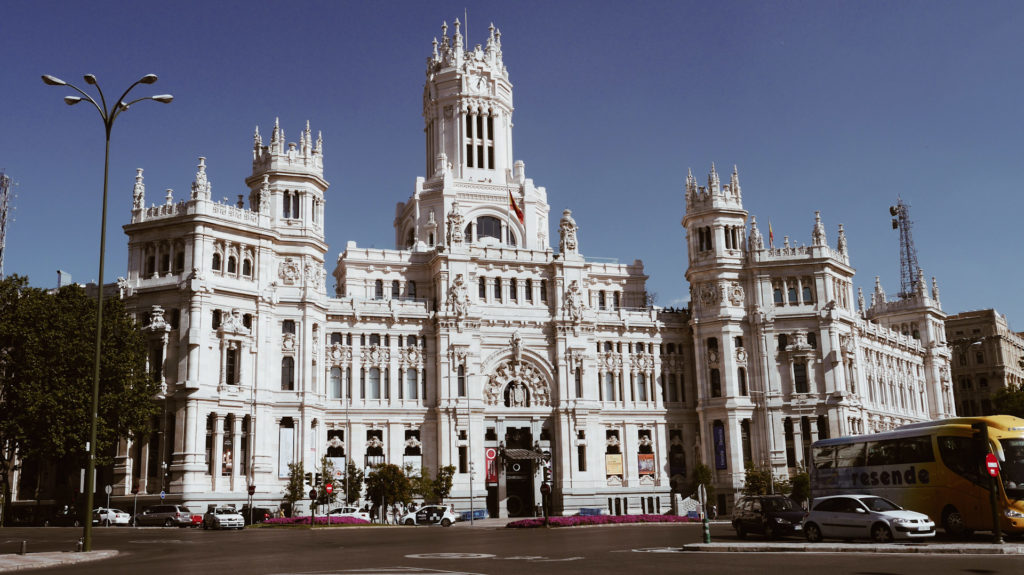
Cibeles Palace and Fountain are significant historical landmarks in Madrid, Spain. They are situated at the Plaza de Cibeles, a well-known public square in the central part of the city. The palace, also known as Palacio de Cibeles, was built in 1909 by architects Antonio Palacios and Joaquín Otamendi as a headquarters for the postal service. It currently serves as the City Hall of Madrid.
Fuente de Cibeles dates back to 1782. This beautiful monument was designed by architect Ventura Rodríguez and is adorned with sculptures by Francisco Gutiérrez and Roberto Michel. The marble statue represents Cybele, the Phrygian fertility goddess, sitting on a chariot pulled by two lions. The fountain has become an emblematic cultural symbol for the people of Madrid.
To reach the Cibeles Palace and Fountain site, tourists can use public transportation options such as bus lines or metro services. Atocha and Recoletos train stations are closely located in the area as well. The nearest metro stations are Banco de España and Retiro, which are approximately ten minutes away.
The exterior of the Cibeles Palace can be admired at any time. Visiting hours for exhibitions and guided visits inside the palace typically range from Monday to Friday during regular business hours. Admission fees may apply for specific exhibitions or guided tours; checking the official website for updated information before visiting is advised.
Madrid: 1 or 2 Day Hop-On Hop-Off Sightseeing Bus Tour.
14. Puerta de Alcalá
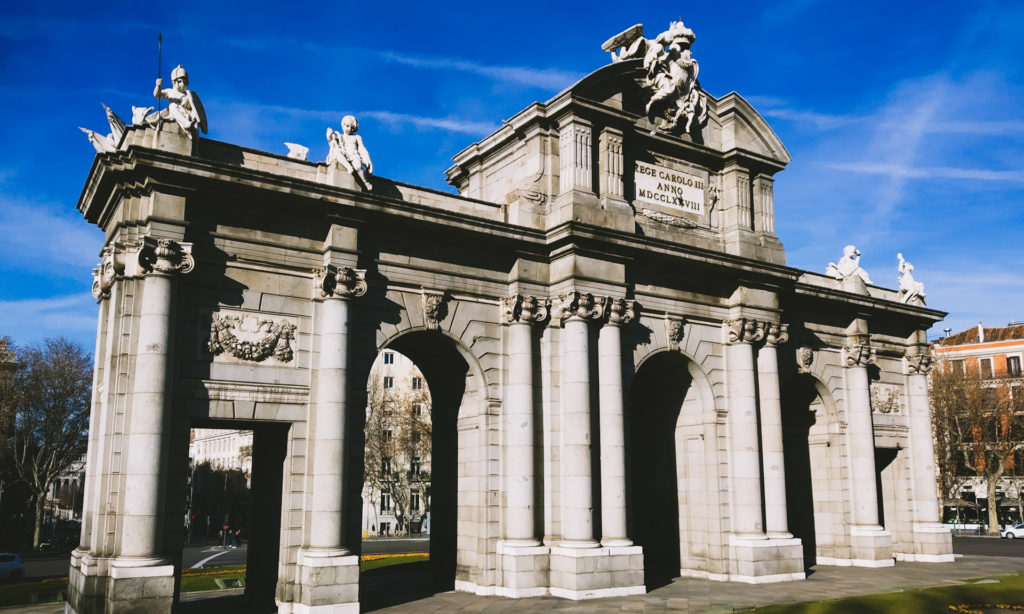
Puerta de Alcalá is a historic monument constructed between 1769 and 1778. It stands as a symbol of the city’s rich history and architectural splendor. Commissioned by King Charles III and designed by Italian architect Francesco Sabatini, the gate showcases a Neoclassical style with large semi-circular arches flanked by rectangular pillars.
The gate is situated in the heart of Madrid, within Plaza de la Independencia. A square connecting two prominent streets, Calle de Alcalá and Calle de Serrano, both of which offer a variety of attractions such as shops, eateries, and parks. Near Puerta de Alcalá, tourists can admire notable landmarks like the Cibeles Fountain and Retiro Park.
In terms of architecture, this impressive gate features five arches embellished with intricate carvings depicting historical events and figures. At its highest point, it stands 44 feet tall (13 meters) and spans 75 feet wide (23 meters).
To reach Puerta de Alcalá, individuals typically utilize public transportation options like buses and metro trains. Nearest metro stations include Retiro (Line 2) or Sevilla (Line 2). The monument is accessible throughout the day at no cost.
15. Thyssen Bornemisza Museum
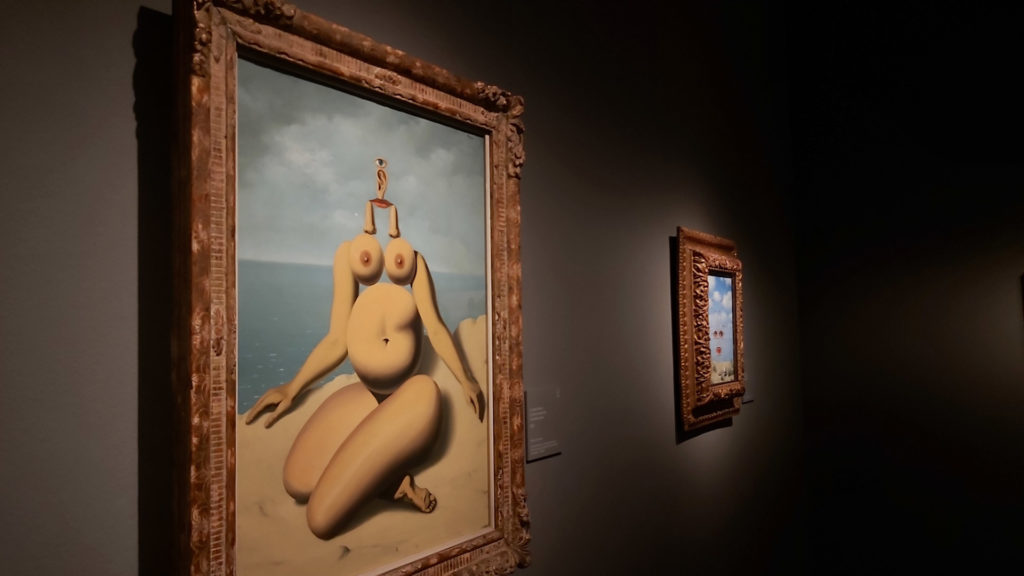
The Thyssen-Bornemisza Museum, located in Madrid, Spain, is an art museum with an extensive collection. Established in 1992, it was named after the Thyssen family, who owned the art collection. The museum is situated in the Villahermosa Palace, a historic building near the famous Prado Museum and the Reina Sofia Museum.
Within this museum, art enthusiasts will find a diverse range of paintings dating from the 13th century to the 20th century. The collection features works from renowned artists such as Rembrandt, Vincent van Gogh, Pablo Picasso, and Salvador Dalí. There is a vast selection of European painting styles, including German Renaissance, Flemish Baroque, and Italian Mannerism. Additionally, American and Asian art are found in smaller sections.
The Thyssen-Bornemisza Museum can be conveniently reached by public transportation. Estación del Arte station (Line 1) serves as the nearest train and metro station.
Opening hours for this attraction vary by day and season; it is generally open from Tuesday to Sunday between 10 am and 7 pm. On Sundays, it closes later, at 9 pm. The museum is typically closed on Mondays and major holidays.
Madrid: Thyssen Museum Guided Tour with Skip-the-Line Entry.
16. CaixaForum Madrid
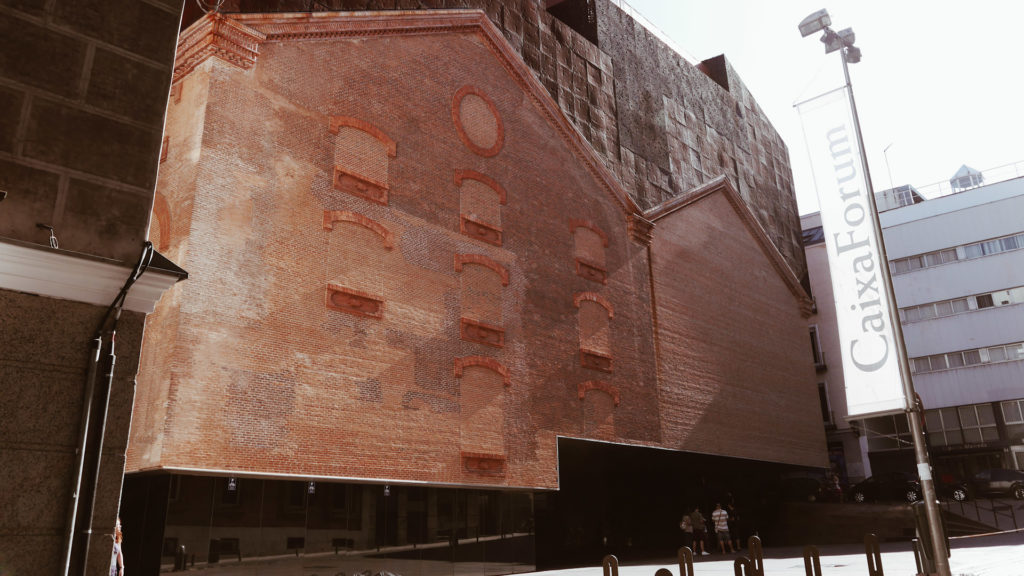
CaixaForum Madrid is a notable cultural center situated in the heart of Madrid. Housed in a former power station built in the early 20th century, this architectural gem was redesigned by Swiss firm Herzog & de Meuron and inaugurated in 2008. The museum is on the Paseo del Prado, amid other prestigious institutions like the Museo del Prado, the Reina Sofía Museum, and the Thyssen-Bornemisza Museum.
The CaixaForum is characterized by its unique facade, made from rusted corten steel, and a peculiar vertical garden by French botanist Patrick Blanc. It features engaging exhibitions ranging from contemporary art to classical works. Additionally, it hosts concerts, workshops, conferences, and various educational programs catering to all age groups.
Getting to CaixaForum Madrid is easy thanks to its central location. It can be reached by public transportation using the metro at the nearby stations Estación del Arte (Line 1) and Banco de España (Line 2).
Madrid: City Highlights Guided Bike Tour.
17. Casa de Campo Park

Casa de Campo Park is a large public park situated in the western part of Madrid, Spain. With an area of 1,722.6 hectares, it is the largest urban park in the country and one of the largest in Europe. The park originated in 1562 when King Philip II moved his court to Madrid and ordered land acquisition to create a recreational space for hunting and other leisure activities. Over the centuries, Casa de Campo Park has become a favored destination for locals and tourists.
The park is bounded by M-30 and M-500 motorways on the east and south, respectively. Moreover, it extends westward to connect with neighborhoods such as Somosaguas and Campamento. Within its boundaries, one will find lush greenery, numerous sports facilities, lakes, large picnic areas, and a fascinating variety of wildlife.
Several notable attractions within Casa de Campo Park include Madrid Zoo Aquarium, an amusement park called Parque de Atracciones Madrid, a major sports complex known as Caja Mágica or Magic Box, Teleférico de Madrid – a fun cable car ride that offers memorable views, and Madrid Arena – an indoor arena used for sporting and music events.
Visitors can reach Casa de Campo Park through various modes of public transportation. The shortest route involves taking Line 10 of the Madrid Metro to Lago or Batán stations. Additionally, numerous bus lines stop near the park’s main entrance points.
Madrid: Zoo Aquarium Madrid Ticket.
18. Sorolla Museum
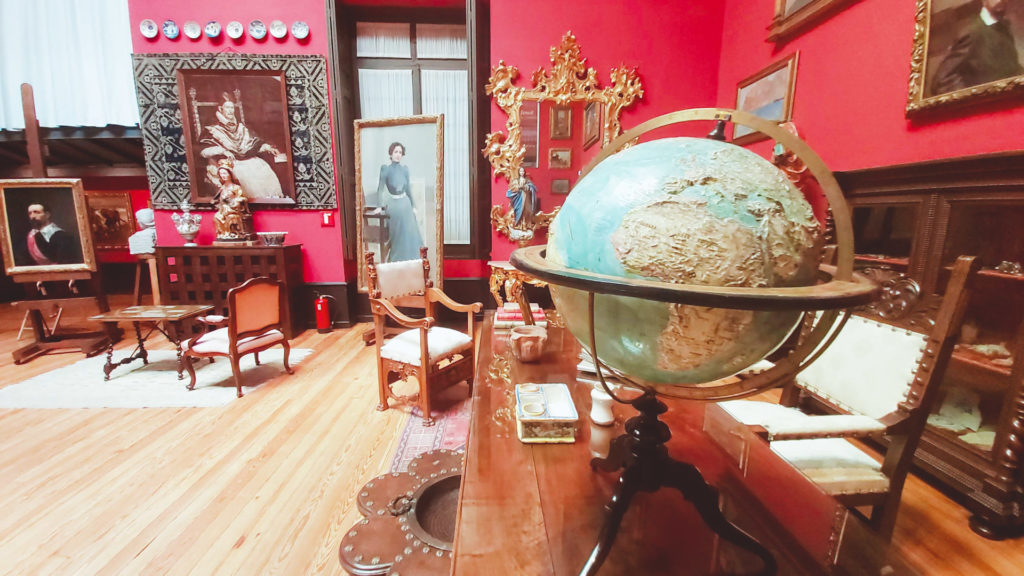
The Sorolla Museum is a noteworthy cultural institution dedicated to showcasing the works and life of prolific Spanish painter Joaquín Sorolla y Bastida. Established in 1932, the museum finds its home within the house and studio where Sorolla lived and worked until his death in 1923. This remarkable museum is nestled within the elegant Chamberí district.
Sorolla, known for his expert skills in capturing light and movement, concentrated predominantly on landscape paintings and detailed portraits. The museum boasts an extensive collection of his artwork and personal belongings, offering a comprehensive view into his life and artistic journey. Notable pieces on display include the well-known masterpieces “Walk on the Beach” and “Sad Inheritance.”
Reaching the museum is relatively simple: travelers may use public transportation options such as buses, the Metro—Gregorio Marañón and Iglesia being the nearest stations.
Visiting hours vary depending on the day: from Tuesday to Saturday, the museum opens at 9:30 AM and closes at 8:00 PM; Sunday hours are limited to 10:00 AM until 3:00 PM. The Sorolla Museum remains closed on Mondays and select holidays.
19. Madrid Río Park
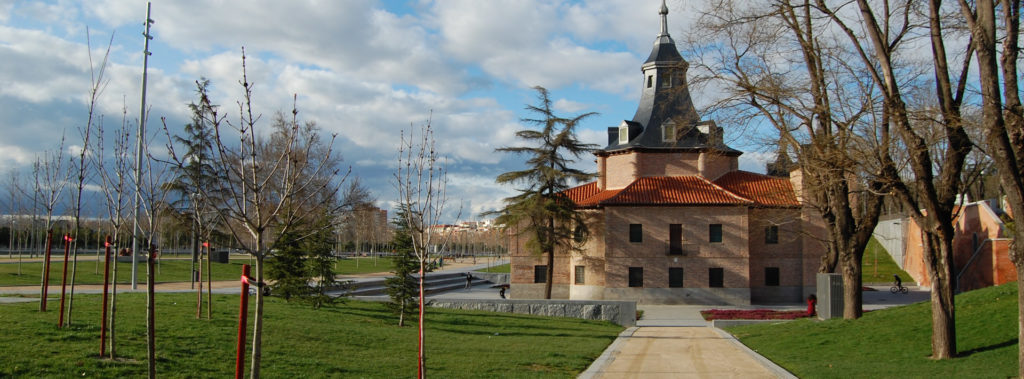
Madrid Río Park is a large urban park established in 2011. It extends across an area of 10 kilometers along the Manzanares River. The park’s development aimed to transform the riverbank areas into vibrant recreational zones for the residents and enhance the ecological value of these spaces.
Located southwest of Madrid’s city center, this expansive park connects several historical bridges and landmarks, such as Segovia Bridge, Toledo Bridge, and King’s Bridge. Offering a scenic landscape for leisure activities, Madrid Río Park features walking and cycling paths, playgrounds, cultural centers, sports facilities, and beautifully designed gardens.
Some notable attractions within the park include the Arganzuela Footbridge, designed by Dominique Perrault with a unique spiral structure; Matadero Madrid, a former slaughterhouse converted into an artistic and cultural center; and numerous themed gardens like the Garden of Feelings and Garden of Waves.
Reaching Madrid Río Park is convenient, with access available through several means of public transport. Multiple metro stations are within proximity to different parts of the park, including Príncipe Pío, Puerta del Ángel, Marqués de Vadillo, and Legazpi.
Madrid Río Park’s opening hours vary according to the season but usually operate from dawn until nighttime. The park remains open throughout the year.
20. Parque de El Capricho
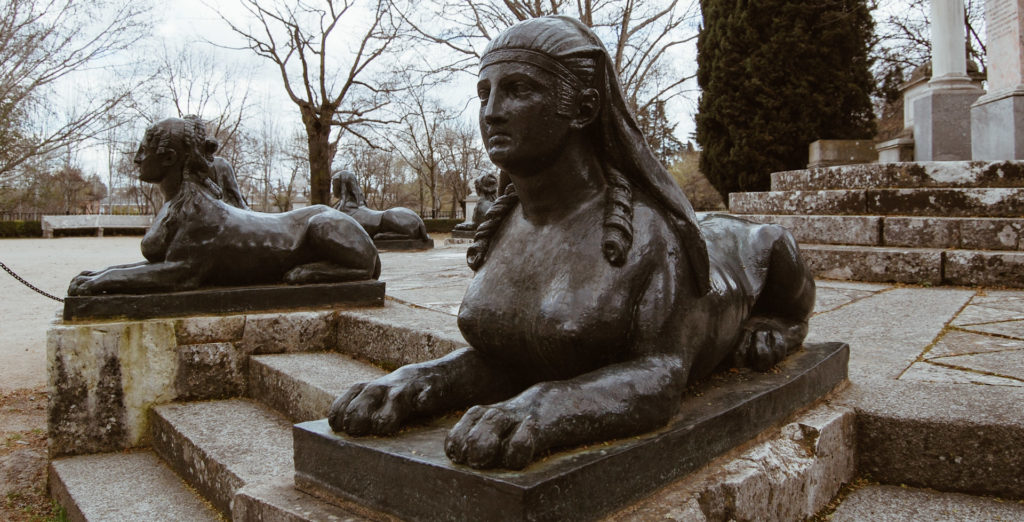
El Capricho Park is a historical green space located in the Alameda de Osuna area of Madrid, Spain. The park, originally designed during the 18th century, features a unique assortment of landscapes, architectural structures, and rich flora and fauna.
The creation of El Capricho Park began in 1784 under the guidance of Duchess Maria Josefa de la Soledad Alonso Pimentel, a prominent member of the Spanish nobility. Renowned architects and artists of the time, including Jean-Baptiste Mulot, Ángel María Tadey, and Antonio López Aguado, participated in its design. The park’s construction continued until 1839, encompassing approximately 14 hectares.
Situated in the northeast region of Madrid, the park features diverse landscapes, such as French, English, and Italian gardens. Some noteworthy architectural structures within El Capricho Park include the Palace, which served as the summer residence for the Duchess during her lifetime, and various follies inspired by classical mythology.
Reaching El Capricho Park is possible through various means of transportation. Access via public transit is available through Line 5 of Madrid’s Metro system at the El Capricho station.
Entrance to El Capricho Park is free. It remains open to the public on weekends and holidays from October to March between 9:00 AM – 6:30 PM and from April to September between 9:00 AM – 9:00 PM.




